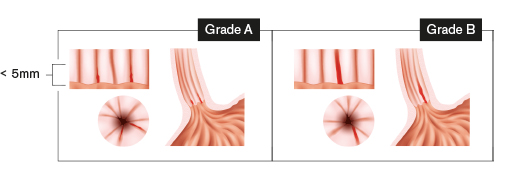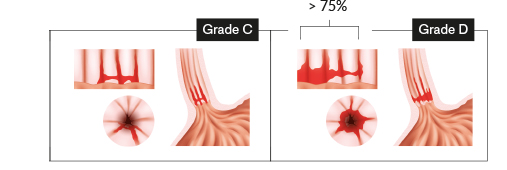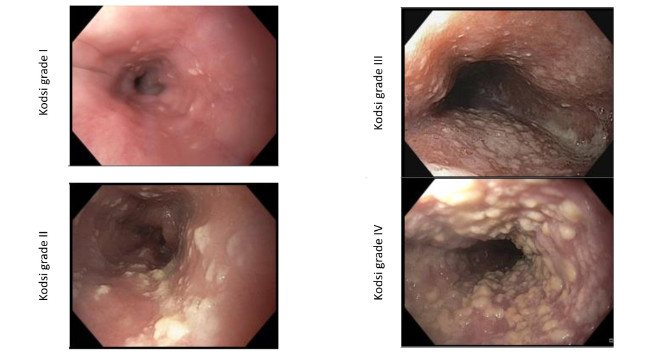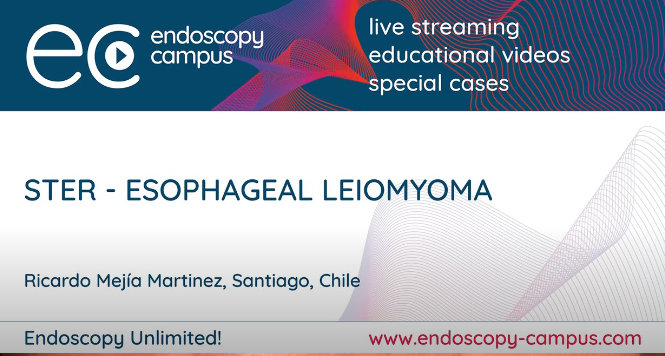Reflux Esophagitis: Los Angeles Classification
Gastroesophageal reflux disease with endoscopically identifiable lesions (erosions, stricture, Barrett’s esophagus) is defined as erosive gastroesophageal reflux disease (GERD). Fewer than 50% of patients with typical GERD symptoms have endoscopically recognizable mucosal lesions (1).
A diagnosis of erosive reflux esophagitis is established when there are patchy, striated, or circular and confluent epithelial defects (erosions) in the mucosa in the distal esophagus. Nearly all of the guidelines on the diagnosis and treatment of reflux disease recommend that reflux esophagitis should be classified endoscopically (2). Due to its ease of use and very minor interindividual variability in the assessment, the Los Angeles classification should be used (3). The German guideline also recommends that other findings during endoscopy (stenosis, ulcer, Schatzki ring, metaplasia, etc.) and the presence of hiatal hernia should also be documented. By contrast, erythema, granulation, an unclear junction between the mucosal area of squamous epithelium and columnar epithelium, increased vascular marking in the distal esophagus, edema, and raised mucosal folds are not reliable signs and should therefore not be used in the diagnosis of reflux disease (2).
The extent of the reflux esophagitis that is present implies various types of therapy (depending on the extent of the symptoms). Mild cases of reflux esophagitis (Los Angeles A/B) should be treated with a proton-pump inhibitor (PPI) at the standard dosage for around 4 weeks, while patients with severe cases (Los Angeles C/D) should receive 8 weeks of PPI at the standard dosage.
Diagram
Mild reflux esophagitis – LA grade A + B
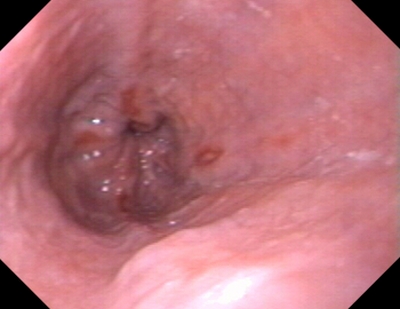
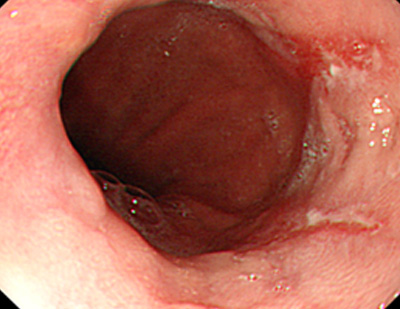


LA grade A: one or several erosions limited to the mucosal fold(s) and no larger than 5 mm in extent.


LA grade B: one or several erosions limited to the mucosal fold(s) and larger than 5 mm in extent (as secondary findings on the left lower image, cicatricial changes in the mucosa may be noted as signs of chronic recurrent reflux esophagitis).
Severe reflux esophagitis – LA grade C + D


LA grade C: erosion(s) extending over mucosal folds, but over less than three-quarters of the circumference.
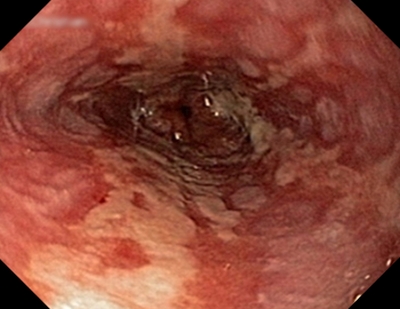
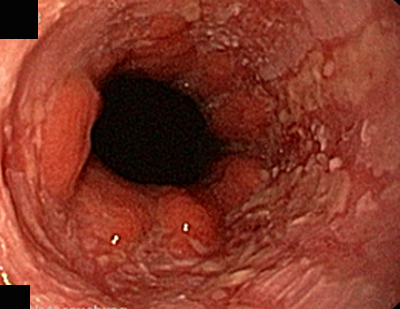

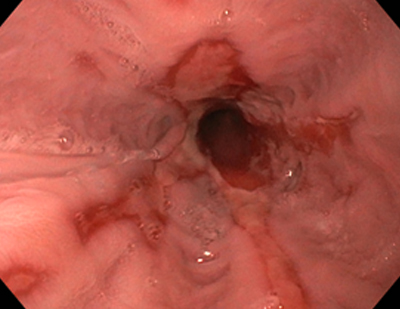
LA grade D: confluent erosions extending over more than three-quarters of the circumference (circular defects).
References
- Fass R, Ofman JJ. Gastroesophageal reflux disease–should we adopt a new conceptual framework? Am J Gastroenterol 2002; 97(8): 1901-9.
- Koop H, Fuchs KH, Labenz J, Lynen Jansen P, Messmann H, Miehlke S, Schepp W, Wenzl TG, und die Mitarbeiter der Leitliniengruppe . S2k-Leitlinie: Gastroösophageale Refluxkrankkheit unter Federführung der Deutschen Gesellschaft für Gastroenterologie, Verdauungs- und Stoffwechselkrankheiten. Z Gastroenterol 2014; 52(11):1299-1346.
- Armstrong D. Endoscopic evaluation of gastro-esophageal reflux disease. Yale J Biol Med 1999; 72(2-3): 93-100.


